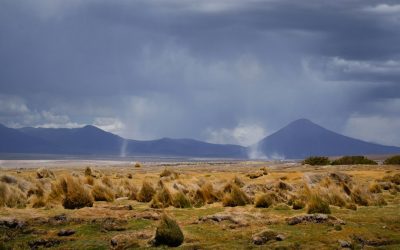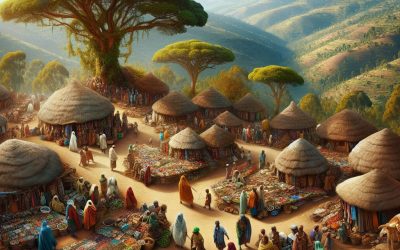Explore the World Through Geography, Natural Resources & Daily History
Clear, reliable and engaging guides that help you understand our planet — from UK geography education to global natural resources and On This Day history events.
Explore, discover, and learn about the wonders of our world! At Earth Site, we’re passionate about bringing geography, history, and science to life for curious minds of all ages. Whether you’re delving into historical events, uncovering the mysteries of the natural world, or seeking interactive resources, you’re in the right place.
Here, you can uncover the stories behind historical events, explore the natural wonders of our planet, and gain valuable insights into how the Earth’s systems shape our daily lives. From the towering peaks of mountain ranges to the far-reaching impacts of human innovation, we aim to make every topic both engaging and informative.
Start your journey of discovery with us today, and let’s make learning an adventure!
What We Cover
Earth Site brings together engaging and accessible educational content designed to help you understand the world, its history, and its natural systems.
🌍 Geography Education (UK & Worldwide)
We publish clear, easy-to-understand geography resources for students, teachers and curious learners. Our guides support geography education in the UK and cover physical geography, climate, ecosystems, population, and global development.
⛏️ Natural Resources & Environmental Geography
Explore detailed country profiles covering natural resources, mining, energy, geology and global environmental challenges. We show how nations manage minerals, water, land and ecosystems, and why these resources matter.
📅 On This Day in History
Every day has a story. Our On This Day history series features major events, anniversaries, traditions, and cultural milestones from around the world — with timelines, context, and fun facts.
TIMELINE
Exploring the Natural Wonders of Gabon: A Journey Through the Heart of Africa
Gabon, located on the west coast of Central Africa, is often referred to as a natural paradise. With its vast rainforests, pristine coastline, and diverse wildlife, Gabon is a haven for nature lovers and adventure seekers. The country is known for its commitment to biodiversity conservation and has made significant efforts to protect its unique ecosystems. In this article, we will explore the importance of Gabon’s biodiversity and conservation efforts, as well as the various natural wonders that make it a must-visit destination. Gabon’s biodiversity is of global significance. The country is home to one of the largest intact rainforests in Africa, covering approximately 85% of its land area. This rainforest is teeming with unique flora and fauna, many of which are endemic to the region. Gabon’s commitment to conservation is evident in its establishment of 13 national parks, covering more than 11% of its territory. These protected areas serve as havens for endangered species such as forest elephants, gorillas, and chimpanzees. Summary Gabon is a natural paradise in Africa with diverse biodiversity and stunning landscapes. The rainforest in Gabon is home to a wide range of flora and fauna, making it a must-visit destination for nature lovers. Gabon’s coastal areas offer a unique blend of beaches, mangroves, and wildlife, making it a perfect destination for adventure seekers. Gabon’s national parks are a haven for endangered species, making it an ideal destination for wildlife enthusiasts. Trekking through the Ivindo National Park is a journey to the heart of Gabon, offering a unique experience for adventure seekers. Discovering Gabon’s Biodiversity Exploring Gabon’s rainforest is like stepping into a world untouched...
Lagomorha: The Fascinating World of British Rabbits, Hares, and Pikas
Lagomorpha is an order of mammals that includes rabbits, hares, and pikas. These small to medium-sized herbivores are found all over the world, including in the United Kingdom. In Britain, lagomorphs play an important role in the ecosystem and have cultural significance as well. Studying these animals is crucial for understanding their behavior, ecology, and conservation needs. British lagomorphs are diverse and include several species of rabbits, hares, and pikas. The most common species in the UK is the European rabbit (Oryctolagus cuniculus), which is found in various habitats across the country. Other species include the mountain hare (Lepus timidus), brown hare (Lepus europaeus), and the pika (Ochotona pusilla). Each species has its own unique characteristics and adaptations that allow them to thrive in their respective habitats. Studying lagomorphs is important for several reasons. Firstly, they are an integral part of the ecosystem and play a crucial role in maintaining biodiversity. Lagomorphs are herbivores and their feeding habits can shape vegetation communities, which in turn affects other species that rely on those plants. Additionally, lagomorphs are prey for many predators, so understanding their behavior and population dynamics is essential for managing predator-prey relationships. Finally, lagomorphs have cultural significance and are often associated with folklore and traditions in many societies. Summary Lagomorpha is the order of British rabbits, hares, and pikas. British lagomorphs include 13 species of rabbits, hares, and pikas. Lagomorphs have a short life cycle, with rapid growth and reproduction. British lagomorphs can be found in a variety of habitats, from grasslands to mountains. Lagomorphs are herbivores and play an important role in the ecosystem as prey and...
Exploring the Charm and Culture of France: A British Perspective
France has long been a top choice for British tourists, and it’s not hard to see why. With its close proximity to the UK, stunning landscapes, rich history, and world-renowned cuisine, France offers a diverse range of experiences for travellers. Whether you’re looking to explore the bustling streets of Paris, relax on the sun-soaked beaches of the French Riviera, or immerse yourself in the charm of the countryside, France has something to offer everyone. One of the main reasons why France is such a popular destination for Brits is its close proximity. With just a short journey across the English Channel, travellers can easily reach France by ferry or train. This makes it an ideal choice for a weekend getaway or a longer holiday. Additionally, France offers a diverse range of landscapes, from the rolling vineyards of Bordeaux to the snow-capped peaks of the French Alps. This means that no matter what type of holiday you’re looking for, you’re sure to find it in France. Summary France is a popular destination for Brits due to its culture, cuisine, and history. The French art of living includes a focus on family, food, and leisure time. French cuisine is diverse and includes famous dishes like croissants and coq au vin. Paris is a city of romance and inspiration, with iconic landmarks like the Eiffel Tower. The French Riviera offers sun, sea, and style, with luxurious resorts and beaches. The French Art of Living: A Guide to their Culture and Customs The French are known for their “art de vivre” or art of living. This concept encompasses their love for good food,...
Unlocking the Power of Trigonometry: Understanding Sine, Cosine, and Tangent
Trigonometry is a branch of mathematics that deals with the relationships between the angles and sides of triangles. It is derived from the Greek words “trigonon” meaning triangle and “metron” meaning measure. Trigonometry has been studied for thousands of years and has played a crucial role in the development of mathematics and science. The history of trigonometry can be traced back to ancient civilizations such as the Egyptians, Babylonians, and Greeks. The Egyptians used trigonometry to solve problems related to land surveying and construction. The Babylonians developed a system of measuring angles and used it to predict astronomical events. The Greeks, particularly Hipparchus and Ptolemy, made significant contributions to trigonometry by developing tables of chords and studying the relationships between angles and circles. Trigonometry is important in mathematics because it provides a way to calculate unknown angles and sides of triangles. It is also used in other branches of mathematics such as calculus, where trigonometric functions are used to model periodic phenomena. In science, trigonometry is used in fields such as physics, engineering, and architecture to solve problems related to forces, motion, and structures. Overall, trigonometry is a fundamental tool that is widely used in various disciplines. Key Takeaways Trigonometry is the study of relationships between angles and sides of triangles. The three basic trigonometric functions are sine, cosine, and tangent. The unit circle is a tool used to understand trigonometric identities. Trigonometry can be used to solve right triangles and real-life problems. Graphing trigonometric functions and understanding their properties is important in advanced trigonometry. The Basics of Trigonometric Functions: Sine, Cosine, and Tangent Trigonometric functions are mathematical functions...
Unravelling the Enchanting Charms of Finland: A Journey Through the Land of a Thousand Lakes
Finland, located in Northern Europe, is a country known for its stunning natural beauty and rich cultural heritage. With its vast forests, thousands of lakes, and picturesque landscapes, Finland offers a unique and unforgettable travel experience. The country is also home to a vibrant and welcoming culture, with a strong emphasis on nature, sustainability, and equality. Finland is a popular travel destination for many reasons. Firstly, its natural beauty is unparalleled. From the breathtaking Northern Lights to the serene lakes and forests, Finland offers a wide range of outdoor activities and experiences. Whether you’re interested in hiking, fishing, kayaking, or simply enjoying the peacefulness of nature, Finland has something for everyone. Additionally, Finland’s cities are vibrant and full of life. Helsinki, the capital city, is known for its modern architecture, bustling markets, and vibrant nightlife. Turku, the former capital city, offers a glimpse into Finland’s history with its medieval castle and charming old town. Both cities offer a unique blend of old-world charm and modern amenities. Summary Finland is a land of natural beauty and rich culture. The country boasts of a thousand lakes that offer a magical experience. Helsinki and Turku are vibrant cities that are worth exploring. The Sami people have a fascinating history and traditions that are worth learning about. Finland is famous for its saunas, spas, and cuisine, including reindeer meat and berry pies. Discovering the Magic of Finland’s Thousand Lakes Finland is often referred to as the “Land of a Thousand Lakes,” and for good reason. With over 188,000 lakes scattered throughout the country, Finland offers endless opportunities for outdoor activities and relaxation. One...
Ethiopia
Ethiopia (Federal Democratic Republic of Ethiopia) Capital: Addis Ababa Population (Estimated July 2012): 93,815,992 Area: 1,063,652 km2 or 410,678 mi2 Currency: Birr (Br) Official Language: Amharic Political Information: Federal Parliamentary Republic Official Religion: No Official Religion (approximately 43.5% of the population are Orthodox, 33.9% are Muslim, 18.6% are Protestant and 4% have other religious beliefs) Highest Mountain: Ras Dejen at 4,533m or 14,872ft GDP Official Exchange Rate (OER is more precise at gauging a countries economic power) (Estimated 2011): $30.5 billion (US$) or (GBP) GDP (OER) Per Capita (per member of the population estimated 2011): (US$) or (GBP) GDP Purchasing Power Parity (PPP is good for gauging living conditions and use of resources but not as accurate as OER. This data has been calculated based on the sum value of all goods and services produced in the country valued at prices prevailing in the United States) (Estimated 2011): $94.76 billion (US$) or (GBP) GDP (PPP) Per Capita (per member of the population estimated 2011): $1,100 (US$) or (GBP) Time Zone (GMT/UTC): +3:00 Wildlife: Counties/Provinces/States: 9 ethnically based states (kililoch, singular – kilil) and 2 self-governing administrations* (astedaderoch, singular – astedader); Adis Abeba* (Addis Ababa), Afar, Amara (Amhara), Binshangul Gumuz, Dire Dawa*, Gambela Hizboch (Gambela Peoples), Hareri Hizb (Harari People), Oromiya (Oromia), Sumale (Somali), Tigray, Ye Debub Biheroch Bihereseboch na Hizboch Leaders: President Girma Wolde-Giorgis with Prime Minister Meles Zenawi. Sources: CIA World Fact Book, Encyclopaedia Britannica. Ethiopia Ethiopia, officially known as the Federal Democratic Republic of Ethiopia, is a landlocked country located in the Horn of Africa. It is the second-most populous country in Africa, with over 115 million people, and has a rich and diverse cultural heritage that...
The Secret Insectivores: Discovering the Fascinating World of British Shrews, Moles, and Hedgehogs
Insectivores are a group of small mammals that play a vital role in ecosystems by controlling insect populations and contributing to soil health. In Britain, there are three main types of insectivores: shrews, moles, and hedgehogs. Despite their importance, these creatures often go unnoticed and are shrouded in mystery. In this article, we will delve into the secret lives of British insectivores, exploring their behavior, habitat, and unique characteristics. Summary British insectivores, such as shrews, moles, and hedgehogs, play a crucial role in maintaining ecosystems. These animals have unique physical characteristics that allow them to thrive in their environments. Shrews are elusive creatures that live secretive lives, often hiding in underground tunnels. Moles are expert diggers that create intricate tunnel systems underground. Hedgehogs have surprising habits, such as self-anointing with saliva and hibernating during the winter months. The Role of Shrews, Moles, and Hedgehogs in Ecosystems Each type of British insectivore has its own unique contribution to the ecosystem. Shrews, for example, are voracious predators that feed on a variety of insects, worms, and small vertebrates. They play a crucial role in controlling insect populations and maintaining the balance of their habitats. Shrews also contribute to soil health by aerating the soil as they burrow and search for food. Moles, on the other hand, are expert tunnelers that spend most of their lives underground. They feed primarily on earthworms and other soil-dwelling invertebrates. By consuming large quantities of these creatures, moles help to regulate their populations and improve soil structure. Their tunneling activities also aerate the soil and promote nutrient cycling. Hedgehogs are perhaps the most well-known of the...
Discovering the Hidden Gems of Fiji: A Journey Through the Paradise Islands
Fiji, located in the South Pacific Ocean, is an archipelago made up of 333 islands. It is known for its stunning natural beauty, pristine beaches, and vibrant culture. The country is situated east of Australia and north of New Zealand, making it a popular destination for travelers seeking a tropical paradise. Fiji’s geography is diverse, with lush rainforests, towering mountains, and crystal-clear waters. The islands are surrounded by coral reefs, which are home to a rich variety of marine life. The culture of Fiji is deeply rooted in tradition and hospitality, with the locals known for their warm and welcoming nature. Fiji has gained a reputation as a tropical paradise, attracting tourists from all over the world. The islands offer a range of activities and attractions, from relaxing on white sandy beaches to exploring vibrant coral reefs. Whether you’re looking for adventure or relaxation, Fiji has something to offer everyone. Summary Fiji is an archipelago of natural wonders, with hidden gems waiting to be discovered. Divers will find paradise exploring Fiji’s coral reefs, while beach lovers can escape to secluded shores. Traditional Fijian villages offer a cultural journey, while hiking trails take you through the wilderness. Fiji’s magnificent waterfalls are a natural wonder, and thrill-seekers can find adventure activities. Don’t miss out on the delicious cuisine of Fiji, and plan your trip according to the best time to visit. The Top Hidden Gems of Fiji: Uncovering the Untouched Beauty While Fiji is well-known for its popular tourist destinations such as Nadi and Denarau Island, there are also many hidden gems waiting to be discovered. These lesser-known destinations offer a...
The Marvelous Benefits of Magnesium: Enhancing Health and Well-being
Magnesium is an essential mineral that plays a crucial role in maintaining overall health and well-being. It is involved in over 300 biochemical reactions in the body, making it vital for various bodily functions. Magnesium is required for energy production, protein synthesis, muscle and nerve function, blood pressure regulation, and maintaining a healthy immune system. Sources of magnesium include green leafy vegetables, nuts and seeds, whole grains, legumes, and seafood. However, many people do not consume enough magnesium through their diet alone. Factors such as poor soil quality, food processing, and certain medical conditions can also contribute to magnesium deficiency. Summary Magnesium is an essential mineral for optimum health. Magnesium is important for strong bones and teeth. Magnesium can reduce the risk of heart disease. Magnesium can improve cognitive performance and mood. Magnesium can enhance muscle strength, endurance, and recovery. The Importance of Magnesium for Strong Bones and Teeth Magnesium is essential for maintaining strong bones and teeth. It works in conjunction with calcium to support bone health. In fact, about 60% of the body’s magnesium is stored in the bones. Magnesium helps regulate calcium levels in the body by activating vitamin D, which is necessary for calcium absorption. Studies have shown that low magnesium levels are associated with decreased bone density and increased risk of osteoporosis. Inadequate magnesium intake can lead to an imbalance between calcium and magnesium levels in the body, which can weaken bones and increase the risk of fractures. Magnesium and Cardiovascular Health: Reducing the Risk of Heart Disease Magnesium plays a crucial role in maintaining cardiovascular health. It helps regulate blood pressure by relaxing...
Unlocking the Secrets of Trigonometry: How to Master Trig and Excel in Math
Trigonometry is a branch of mathematics that deals with the relationships between the angles and sides of triangles. It is derived from the Greek words “trigonon” meaning triangle and “metron” meaning measure. Trigonometry is an important field of study because it has numerous applications in various fields such as physics, engineering, architecture, computer graphics, and more. Trigonometry is used to solve problems involving distances and angles. For example, in physics, trigonometry is used to calculate the trajectory of a projectile, the motion of waves, and the behavior of light. In engineering, trigonometry is used to design structures such as bridges and buildings, as well as to calculate forces and stresses on materials. In architecture, trigonometry is used to design and construct buildings with precise angles and dimensions. In computer graphics, trigonometry is used to create realistic 3D models and animations. Key Takeaways Trigonometry is the study of triangles and their relationships to angles and sides. Trigonometry is important in fields such as science, engineering, and architecture. Angles can be measured in degrees or radians, with 360 degrees or 2π radians in a full circle. The sine, cosine, and tangent functions relate angles to the ratios of sides in a right triangle. Trigonometric identities can be used to simplify equations and solve problems, while advanced topics include inverse trig functions and hyperbolic trig. The Basics of Trigonometry: Understanding Angles, Degrees, and Radians Angles are a fundamental concept in trigonometry. An angle is formed when two rays share a common endpoint called the vertex. Angles are typically measured in degrees or radians. Degrees are the most common unit of measurement for...
Exploring the Rich Culture and History of Ethiopia: A Journey Through the Land of Origins
Ethiopia, located in the Horn of Africa, is a country with a rich and diverse history and culture. It is one of the oldest countries in the world, with evidence of human habitation dating back thousands of years. From ancient civilizations to powerful empires, Ethiopia has a fascinating past that has shaped its present-day culture. This article will explore the origins of Ethiopia, its cultural diversity, ancient kingdoms, the Ethiopian Orthodox Church, cuisine, natural wonders, music and dance, the coffee ceremony, art and craftsmanship, and its contemporary culture. Summary Ethiopia has a long and complex history, with evidence of human habitation dating back over 3 million years. Ethiopia is home to a diverse range of cultures and traditions, with over 80 different ethnic groups living within its borders. The ancient kingdoms of Ethiopia, including Aksum and Lalibela, are renowned for their impressive architecture and religious significance. The Ethiopian Orthodox Church is a major influence on Ethiopian culture, with its unique blend of Christianity and traditional beliefs. Ethiopian cuisine is known for its bold flavours and use of spices, with dishes like injera and doro wat being popular both in Ethiopia and around the world. The Origins of Ethiopia: A Brief History Ethiopia has a long and storied history that dates back to ancient times. The earliest known civilizations in Ethiopia were the D’mt and Aksumite kingdoms, which thrived from around 800 BCE to 700 CE. The Aksumite Empire was one of the most powerful in the ancient world, controlling trade routes and establishing a vast empire that stretched from present-day Sudan to Yemen. However, the Aksumite Empire eventually declined...
The Fascinating World of Hyracoidea: Exploring the Quirky Habits and Traits of Hyraxes
Hyracoidea and Hyraxes: The Small Mammals with Giant Connections Hyraxes might look like oversized guinea pigs or odd rabbits, but these unassuming creatures belong to the remarkable order Hyracoidea. Although they are small and often overlooked, hyraxes are closely related to elephants and manatees, not rodents. This surprising fact, along with their fascinating evolutionary history and unique adaptations, makes hyraxes an extraordinary topic of study in mammalian biology. This article delves deep into the world of Hyracoidea, revealing the natural history, behavior, species diversity, and ecological role of these herbivorous mammals. If you’re curious about odd relatives in the animal kingdom, this is an article worth reading. 🗂️ Article Outline: Exploring Hyraxes and Hyracoidea 1. What Are Hyraxes and What Is the Order Hyracoidea? 2. Why Are Hyraxes Closely Related to Elephants and Manatees? 3. Where Do Hyraxes Live? Habitat and Distribution 4. What Species of Hyraxes Are There? 5. What Are the Differences Between Rock and Tree Hyraxes? 6. How Do Hyraxes Behave in the Wild? 7. What Are Hyraxes’ Physical and Anatomical Adaptations? 8. How Do Hyraxes Reproduce and Develop? 9. What Role Do Hyraxes Play in Their Ecosystems? 10. Why Do Hyraxes Matter in Evolutionary Studies? 1. What Are Hyraxes and What Is the Order Hyracoidea? Hyraxes are small, well-furred, herbivorous mammals that belong to the order Hyracoidea. Despite their resemblance to rodents or rabbits, they share a closer ancestry with elephants. The order Hyracoidea includes just one living family, Procaviidae, and today, there are recognized 11 species of hyraxes. These animals range between 30 and 70 cm in length and typically weigh between 2...











